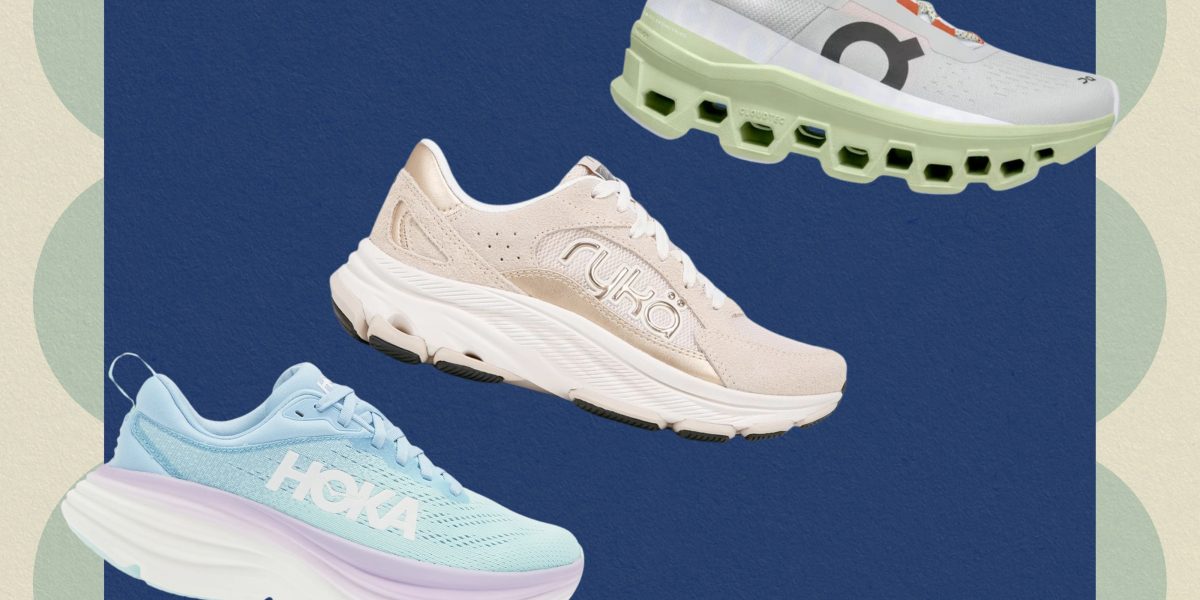Our personal favorite is the Tiem Slipstream: It won a 2024 Sneaker Award because of its cross-trainer-like sole and recessed cleat, which makes it ideal for hybrid classes where you’re getting on and off the bike to work out. If you’re looking for a more stylish option, check out Nike’s sleek SuperRep shoes (they’re one of New York City–based cycling instructor Erica Osberg’s top choices).
Tiem
Slipstream Indoor Bike Shoes
Nike
SuperRep Cycle 2 Next Nature
What should you look for in a workout shoe?
The best workout shoe for you ultimately comes down to personal preference—there isn’t one magic pair that’s right for everyone. But the experts we spoke with do have a few tips to keep in mind as you shop.
Fit
Your shoes should feel comfortable, and that starts with finding the right fit. “Overall, you want to make sure that the shoes are the proper size, and shoe size can change as we age,” Dr. Canzanese says. “There should be a thumbnail’s length [of space] between the tip of your longest toe and the front of the shoe,” she explains. They should also be easy to wear almost right away—avoid pairs that feel like they need to be broken in.
Arch support
While arch support is key for everyone, it’s usually the biggest concern for people with plantar fasciitis (inflammation and irritation of the plantar fascia, a broad, ligament-like structure that starts on the bottom of your heel bone and fans out across your arches, up to the ball of your foot). You can have plantar fasciitis whether you have flat feet, high arches, wide feet, or narrow feet—so, Dr. Canzanese points out, it’s important to try lots of different shoes on to find a pair that feels good and offers the support you need.
Feel like your shoes fit well, but don’t have enough height in the arch? Try some insoles for additional relief.
Cushioning
The more cushioning a shoe has, the more shock absorption you’ll get. That’s a bonus when you’re jumping, running, or walking, but it isn’t really necessary for lifting or cycling. For the latter activities, you’ll want a pair that’s relatively flat and keeps your feet close to the ground—in these cases, more cushioning can mean less stability.
Not all cushioning is created equal, either. Some foams are more responsive, or springy, while others provide a more squishy, cloud-like feel. Often, shoes designed for racing will feature layers of foam with a carbon fiber or plastic plate sandwiched in between, to provide even more lift-off power. You’ll want to try out different options to see what makes you feel fastest, most stable, or most comfortable, depending on what you’re going for.
Traction
A grippy shoe is good for pretty much any activity to help keep you from slipping. Rubber outsoles have a sticky texture to keep you feeling steady on your feet. And for activities like hiking or trail running, it’s important to find shoes that have deep lugs on the bottom for added traction on muddy, uneven terrain.
Heel-to-toe drop
Heel-to-toe drop refers to the difference in the height of a shoe’s sole between the heel and forefoot. Some workout shoes have a steeper drop, while some are flatter, with very little or zero drop. The heel-to-toe drop that’s right for you largely depends on what feels good during your workout. For example, many lifting shoes have a low drop—and while that might be ideal during squats and deadlifts, you may prefer a higher drop for running and walking.
Get more of SELF’s great product recommendations delivered right to your inbox (for free!).
Related:
